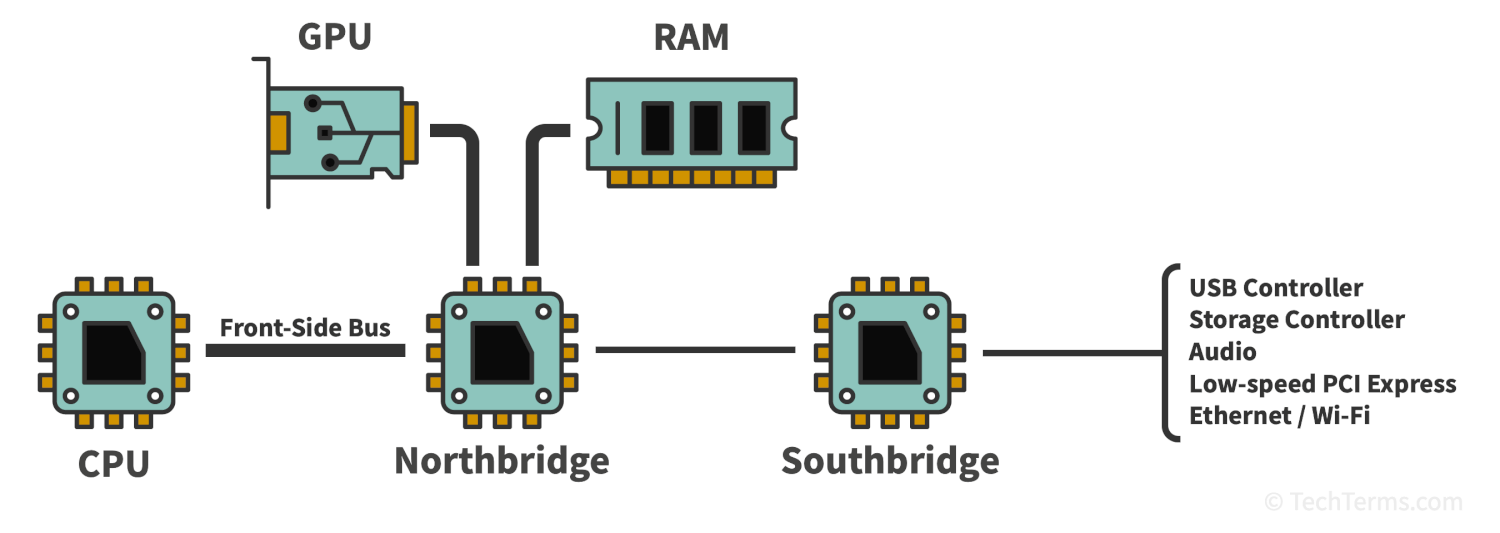Northbridge
The northbridge is a chip on some computer motherboards that connects the CPU to other primary system components. A computer's northbridge directly links the CPU to the primary system memory and several high-speed expansion slots. It also connects to the southbridge, which provides connectivity to other components. Most computers in the 1990s and 2000s used a northbridge chip, but in the 2010s, CPU manufacturers began integrating memory and PCI Express controllers directly into the CPU to reduce latency.
A computer's northbridge chip connects to the CPU using a high-speed connection called the front-side bus. From the northbridge, data travels between the CPU and the system RAM — for this reason, the northbridge is sometimes called the Memory Controller Hub (MCH). It also connects the CPU to high-speed PCI Express lanes designed for the system's GPU. Finally, it links the CPU to the southbridge chip that provides additional PCI Express lanes and communicates with the system's storage controllers, USB ports, networking interface, and other I/O components.
Advances in miniaturization and chip design now allow CPU makers to integrate the northbridge functions directly into the CPU itself. Removing the need for data to travel over the front-side and through the northbridge reduces latency and increases memory bandwidth. CPUs also incorporate the connection to several high-speed PCI Express lanes for the video card, or may even include the GPU itself. A separate chipset on the motherboard still provides other I/O connectivity, but the term "southbridge" is no longer used — it is instead called the Platform Controller Hub (PCH) or simply "the chipset."

 Test Your Knowledge
Test Your Knowledge